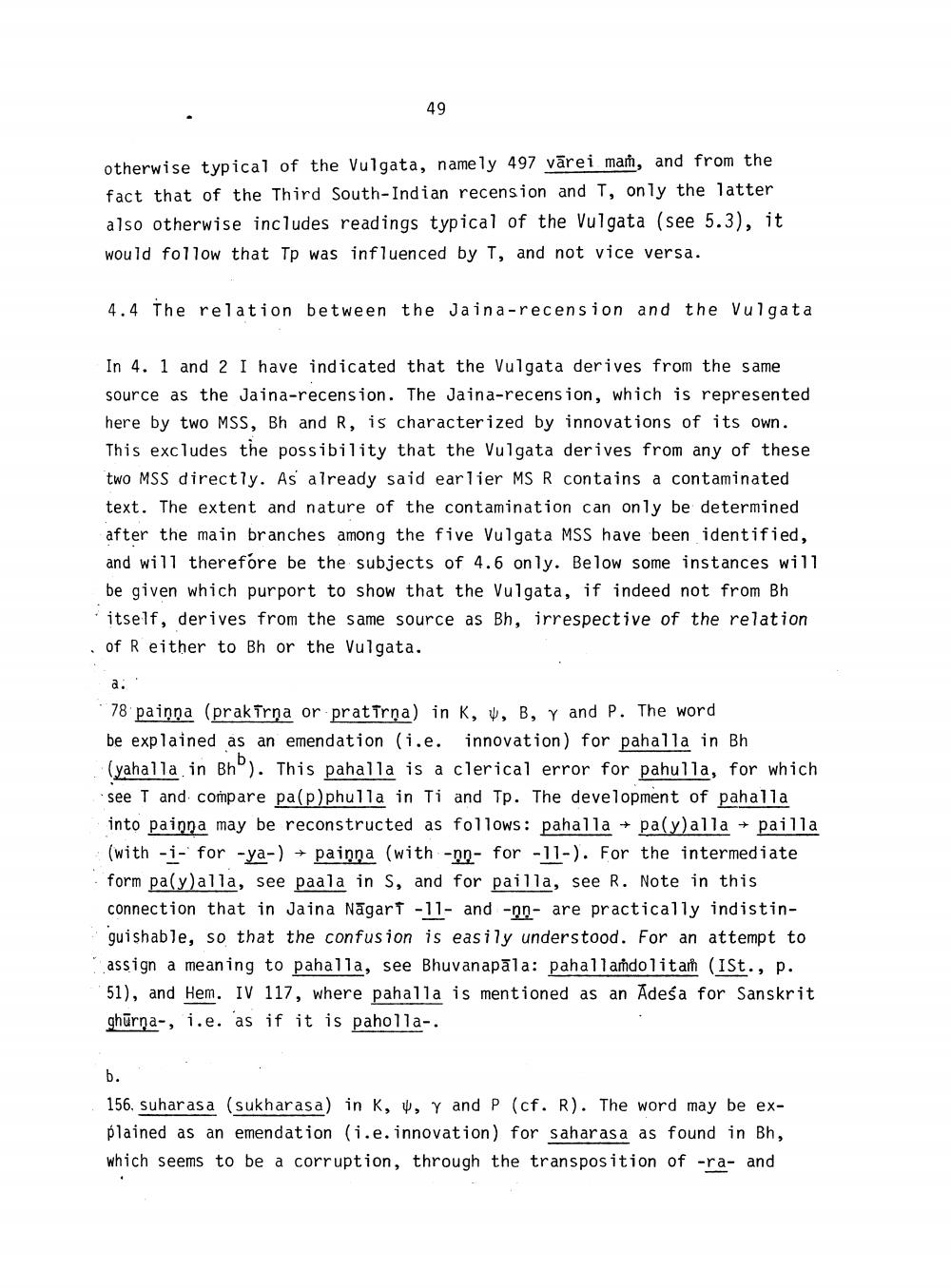________________
49
otherwise typical of the Vulgata, namely 497 vārei mam, and from the fact that of the Third South-Indian recension and T, only the latter also otherwise includes readings typical of the Vulgata (see 5.3), it would follow that Tp was influenced by T, and not vice versa.
4.4 The relation between the Jaina-recension and the Vulgata
In 4. 1 and 2 I have indicated that the Vulgata derives from the same source as the Jaina-recension. The Jaina-recension, which is represented here by two MSS, Bh and R, is characterized by innovations of its own. This excludes the possibility that the Vulgata derives from any of these two MSS directly. As already said earlier MS R contains a contaminated text. The extent and nature of the contamination can only be determined after the main branches among the five Vulgata MSS have been identified, and will therefore be the subjects of 4.6 only. Below some instances will be given which purport to show that the Vulgata, if indeed not from Bh itself, derives from the same source as Bh, irrespective of the relation of R either to Bh or the Vulgata.
a. 78 paiņņa (prak Trņa or prat Trņa) in K, W, B, Y and P. The word be explained as an emendation (i.e. innovation) for pahalla in Bh (yahalla in Bho). This pahalla is a clerical error for pahulla, for which see T and compare pa(p)phulla in Ti and Tp. The development of pahalla into painna may be reconstructed as follows: pahalla + pa(y)alla + pailla (with -i- for -ya-) + paiņņa (with-on- for -11-). For the intermediate form pa(y)alla, see paala in S, and for pailla, see R. Note in this connection that in Jaina Nagart - 11- and -un- are practically indistinguishable, so that the confusion is easily understood. For an attempt to assign a meaning to pahalla, see Bhuvanapāla: pahalladolitam (ISt., p. 51), and Hem. IV 117, where pahalla is mentioned as an Adeśa for Sanskrit ghūrņa-, i.e. as if it is paholla
b.
156. Suharasa (sukharasa) in K, y, Y and P (cf. R). The word may be explained as an emendation (i.e.innovation) for saharasa as found in Bh, which seems to be a corruption, through the transposition of -ra- and




